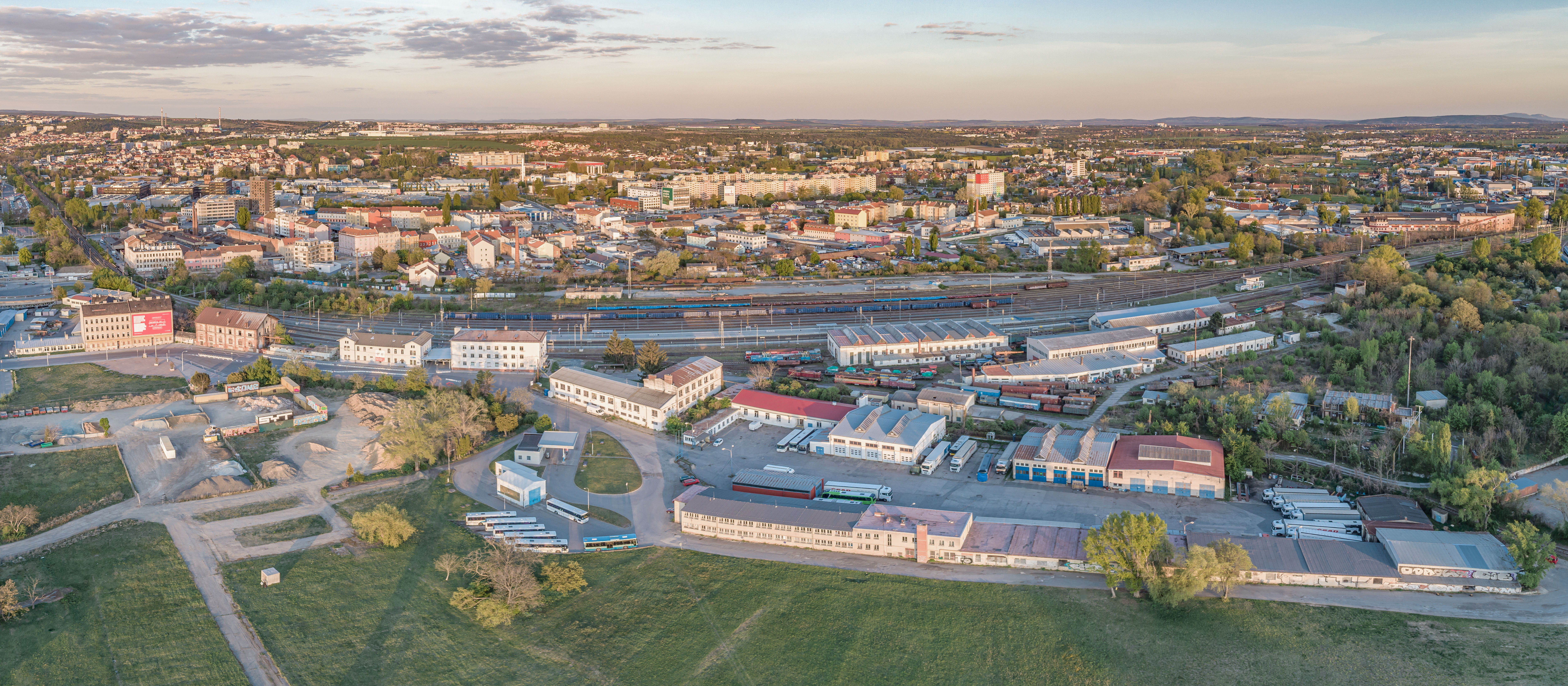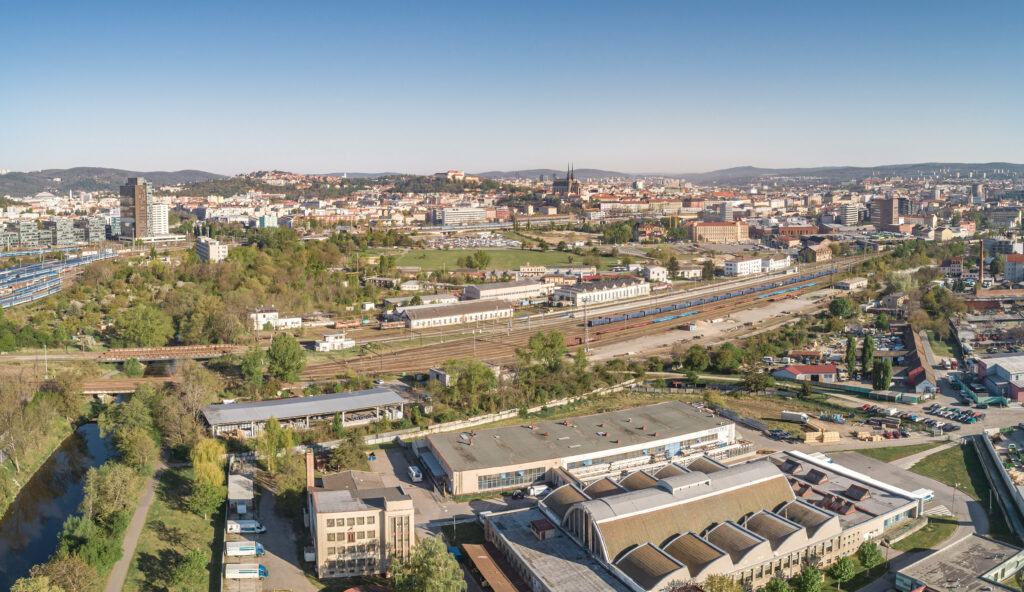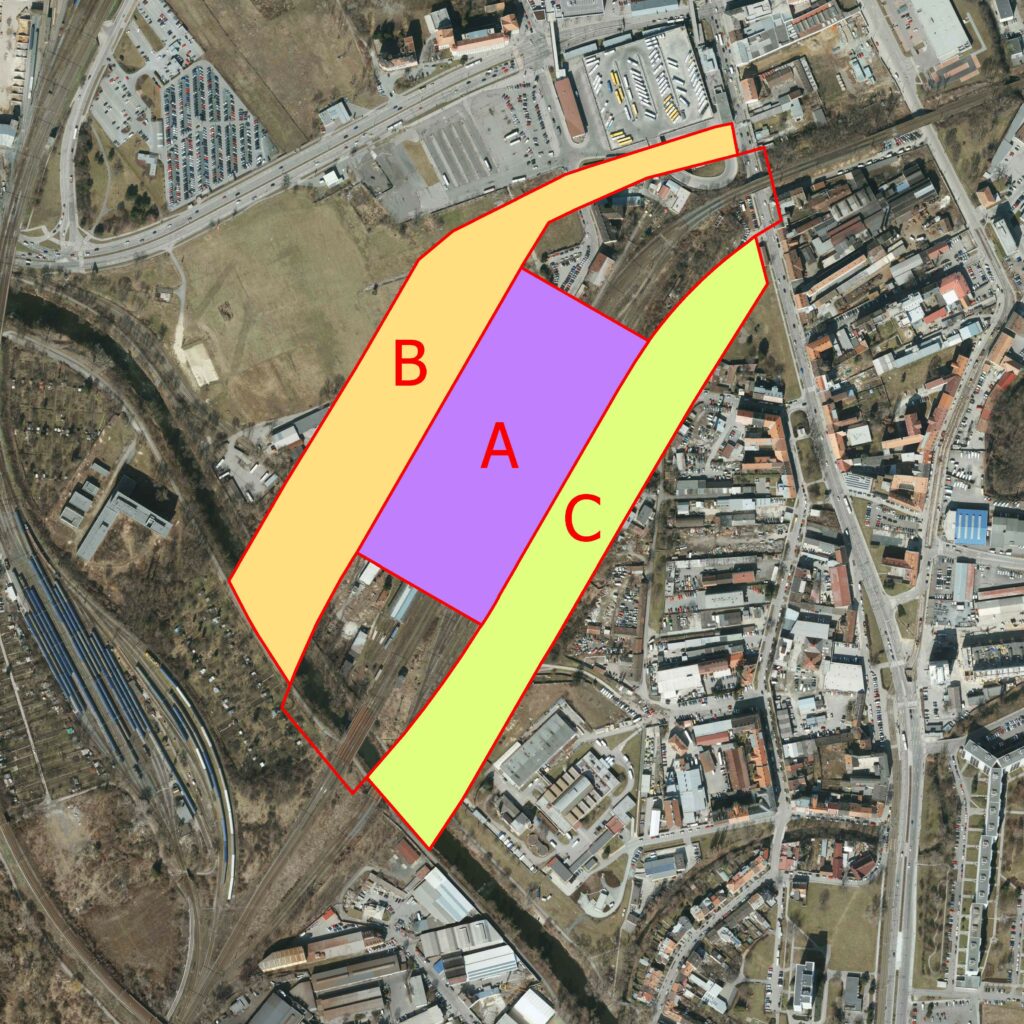International competition
The largest architectural competition in the history of the Czech Republic has started. A total of 12 teams of architects advanced to the first round of the competition and they will now start working on the design of the station building and adjacent public spaces. Among them are studios from the Czech Republic, Austria, Germany, the Netherlands, France, Denmark, the USA and the United Kingdom. A total of 50 requests to participate from 15 countries were submitted. The competition is arranged jointly by the City of Brno and the state organisation Railway Administration, and it is organised by the Brno City Chief Architect‘s Office.
The new main train station will form a significant part of the city and it will fundamentally affect its development. It will be a key transport hub with the possibility of fast transfer between train, bus and urban public transport. Based on the results of the study, Brno is also preparing the possibility of switching to the north-south railway diameter. The station will thus become not only a new entrance gate to Brno, but also the centre of the new Trnitá district south of the historic centre.

In the first phase, twelve competitors will partially prepare their competition proposals and four of them will be selected to participate in the second phase of the competition. In the second phase, the four selected participants will prepare a more detailed version of their proposals, the panel will select the winner and determine the order in the second, third and fourth place. The evaluation of proposals in the first phase will take place in early March; the second phase evaluation will take place in June 2021. The winner will participate in the elaboration of subsequent project documentation.
The competitors will be tasked with designing the station building, including the roof and the platforms, the layout of the interior and the location of the main station hall, as well as the complete solution of adjacent public spaces, including administration buildings, housing and public amenities. It is also necessary to solve the form and location of the bus station, urban public transport terminal, parking, bicycle storage or pedestrian connection. In 2018, the representatives of the city and the region decided, partly on the basis of a feasibility study and expert opinions, that the new station will stand by the river on the site of today’s lower station.
About the new station
The new train station will offer greater capacity, improved passenger comfort and modernized railway traffic. It will be located on a bridge body at a height of seven meters above the ground and it will not form a barrier between the northern and southern parts of the new Trnitá district. The building will not be a spatial barrier, and it will not create differences between a “posh station forecourt” and a “neglected are behind the station”, as is currently the case. It will become a key transport hub with the possibility of fast transfer between train, bus and urban public transport.
Along with the station, a simplification of the Brno railway network is being designed, which will free up large areas of tracks in the city centre. The termination of the current station and the relocation of the main station to the existing lower station will free up space for parks and recreation. The selected variant will have fewer railway tracks, which means less noise pollution, which will enable construction of more flats.
The removal of railway embankments will make it possible to create a strip of parks lined with apartment buildings along Uhelná Street, thus creating a green path that will serve as a cyclist and pedestrian connection between the historic city center and the Svratka River. At the same time, this will make full use of the currently undeveloped recreational potential of the river embankment.
Combining freight and passenger traffic into one corridor will reduce the fragmentation of the city and reduce the amount of noise, vibration and dust along the cancelled passenger line. Therefore, the railway junction with the station by the river has a higher potential for housing and can accommodate more inhabitants in the newly built district; a larger proportion of the population would also live closer to the historic core of the city. This will reduce car traffic, as fewer people will be forced to look for a place to live in the outskirts.
The main station in the riverside position (Ab variant) was chosen on 30 May 2018 by the Central Committee of the Ministry of Transport.


